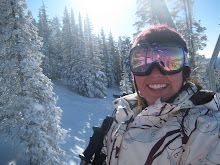
Media representations of popular cliques of girls are everywhere today. Popular crowds have been in teen movies forever, but I feel that the representation of adolescent girls has more recently taken a turn for the worse. Take the movie Mean Girls, for example. An extremely popular movie still today, it portrays "The Plastics" as a mean, yes, but relatively harmless and normal youth phenomenon. These girls describe the "adolescent social group that excludes others on the basis of superficial differences, exercising greater than average amount of peer pressure upon its members" definition of a clique to a "T." Everything from enforcing their own dress code ("And on Wednesdays, we wear pink"), to having their own exclusive lunch table ("We would like to invite you to sit with us every day for the rest of the week."), to dating the most popular boys, being rich, partying, ditzy, exclusive high school girls. The problem is how much the movie mocks the power these girls have over the school. Even the teachers are scared of the Plastics. I understand that there are incentives for high schoolers to join cliques as part of identity formation and using a smaller group to ease their way to the larger culture of the school. I get that. But what frustrates me is when students think it is actually okay to uphold the "popular girl" phenomenon portrayed by the media. I even had a student (to remain anonymous) write a poem about her identity in which she claimed her ultimate goal in high school was to "look better, act better, and be better than everybody else." Now if only I could get her to focus that energy on her English homework.
Other representations of popular cliques are evident in television shows. In the 1990's Beverly Hills, 90210 (a personal favorite), documented (for the first 3 seasons), no other group but the popular group's experience at the fictional West Beverly High. When David Silver (the nerdy freshman) started to become part of the "group", he left his old best friend Scott Scanlon to fend for himself. And what happens to Scott? He commits suicide, and on top of it, no one comes to his funeral. Or what about The O.C.? Seth Cohen only accidentally stumbles into the popular group after Ryan comes to live in his house. He frequently comments on his depressing childhood and adolescence, and that Ryan is his only friend. It isn't until he is accepted into the popular group that he feels his life even has meaning, and that wasn't until the end of season 2. Perhaps the worst of all is Gossip Girl, which idealizes the popular crowd. Incredibly rich, impossibly beautiful, and frighteningly beautiful, the main characters Blair and Serena embody the stereotypical popular girl. They hold interviews to audition for new "group members", and do enough backstabbing, sleeping around, partying, and, as the title would suggest, gossiping, to make for a mildly entertaining show. However, where do we draw the line between the media representation and reality? As "reality" shows like Laguna Beach and The Hills would suggest, perhaps that line is a little more blurred than we thought. The problem lies when this "relatively harmless" teen phenomenon actually does have very harmful repercussions in reality that are ignored in real life.
In actuality, the cliquishness in American high schools and their domineering presence can have an incredibly negative impact on those who are left out. The media fails to represent the worsened feelings of alienation, depression, and even rage felt by the outsider students. Incidents like the Columbine High School shooting in 1999 reflect some of the possible actions of those who aren't accepted by the mainstream school culture. Idealizing the hierarchies among teenagers suggest that cliques, while on the one hand help students form identity, can actually be incredibly harmful. It is one thing when "The Plastics" separate themselves and reinforce their popular identity by rejecting other groups. The point is, while entertaining to watch in the media, the reality is idealizing and glorifying popularity in high school can have negative effects for those in and outside the group.

Kimberly, you have such important insights about the phenomena of popularity and cliques in high schools that I think it would be awesome for you to find a way to teach a critical analysis of these concepts using the movies and shows as evidence. Have you ever considered finding a way to work this into curriculum and teach it?
ReplyDeleteThis concept exists outside of television and film, too. There are many book series about girl cliques, and my students read them voraciously. Does it affect their behavior and attitudes? For some of them, sadly, yes, it does.
ReplyDelete